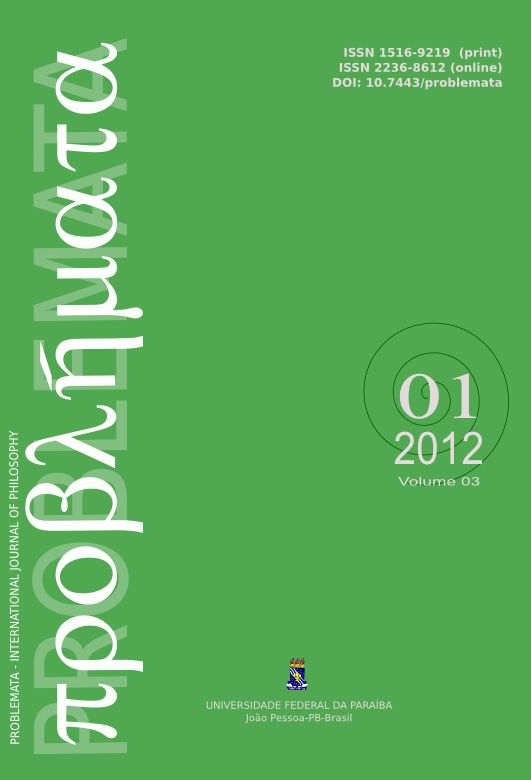HEIDEGGER AND THE FRONTIER-DIMENSION BETWEEN THE ARTIFACT AND THE OBJECT: A study concernig the term Zeugding “thing of use” in the context of Being and Time<a href="http://dx.doi.org/10.7443/problemata.v3i1.12160"><i> <b>[doi: 10.7443/problemata.v3i1.121
DOI:
https://doi.org/10.7443/problemata.v3i1.12160Keywords:
Heidegger, útil, objeto, Comprensión, TeoríaAbstract
This exposition emerges as an attempt of explicitation of an enigmatic term, which, in spite of being used only one time within the pages of Being and Time, turns to be loaded with ontological relevance: It is the concept of Zeugding, or “Thing of Use”. This term seems to unify two apparently incompatible planes: the utilitary aspect of beings (beings as artifacts), and the objective aspect (beings as things), each one of them, discovered by a particular approach vision oriented at the world, respectively, Circunspection and Theory. In order to unravel the meaning of that peculiar notion, this investigation will engage in a study of the previously mentioned elemental modes of Comprehension. Our objective will be exploring the frontier-notion of the “Thing of Use” in the context of the principles of Heidegger’s Being and Time with a view to make its content explicit, and finally suggesting an interpretation of that concept as a incipient form of objectification, inherent to the thematising vision of science, which, nonetheless, occurs without the necessity of producing a change in the inmediate mode of acces to the world.Downloads
Download data is not yet available.
Downloads
Published
2012-05-29
Issue
Section
Papers
License
Authors who publish with this journal agree to the following terms:
- Authors retain copyright and grant the journal right of first publication with the work simultaneously licensed under a Creative Commons Attribution License that allows others to share the work with an acknowledgement of the work's authorship and initial publication in this journal.
- Authors are able to enter into separate, additional contractual arrangements for the non-exclusive distribution of the journal's published version of the work (e.g., post it to an institutional repository or publish it in a book), with an acknowledgement of its initial publication in this journal.
-
- Authors are permitted and encouraged to post their work online (e.g., in institutional repositories or on their website) prior to and during the submission process, as it can lead to productive exchanges, as well as earlier and greater citation of published work (See The Effect of Open Access).





